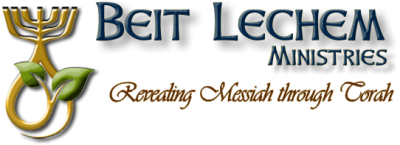Numbers 25:10-30:1
July 27th, 2019
Numbers 28:2 Command the children of Yisra’ěl, and you shall say to them, ‘Take heed to bring My offering, My food for My offerings made by fire as a sweet fragrance to Me, at their appointed time.’
Hebrew Definitions
Qaw-rab brq brq: The linguistic use of the word karav will therefore always involve coming near, drawing near, approaching, or entering into the midst. The pictograph meaning is “Encircle qthe King’s r dwelling b.”
Qor-ban }brq nbrq : Adding the suffix nun sofit } to this “approach” concept makes it even more exciting. The Hebrew letter nun n is the symbol meaning son and heir. Nun sofit } represents the ultimate, final “son and heir” – in our view, none other than Messiah Himself. The Hebrew idea of korban then means “drawing near to and approaching after the manner of, and in the merit of, the ultimate son and heir, Messiah!”
The symbolism and significance of the animals
The bulls are the most valuable of all the animals. They represent strength, power, and aggressiveness.
Strong individuals who carry the burden – symbolic of elders and political leaders.
They were a beast of burden, and a source meat.
They were used for the following offerings, olah, shelamim, and chatah. (Burnt, Peace, Sin)
The rams represent strength and were non-aggressive.
There symbolism was strong individuals – male family leaders, the whole family as a unit.
The uses for rams were meat, wool, reproduction.
There associated offerings were olah, shelamim, chatat, asham.
The lambs were the weaker of all the animals.
They represent submissive, subservient – family, non-leadership.
The uses for lambs/sheep were wool and meat.
The associated offerings were olah, shelamim, and chatah.
The goats are strong, self-willed.
There symbolism is rebellious, stubborn – reciprocal of the sheep.
There uses are milk and meat.
Associated offerings are olah, shelamim, chatat. Most often the “sin offering”.
Psalm 42:1-2 As a deer longs for the water streams, So my being longs for You, O Elohim. My being thirsts for Elohim, for the living Ěl. When shall I enter in to appear before Elohim?
As we draw near to YHWH, it is important to come humbly before Him. This is the symbolism of the lambs.
To be meek and mild, not arrogant or prideful.
The bulls symbolize how valuable drawing near is to us.
They represent the leadership in the kahol.
On the New Moon and on Shavuot there is an additional bull added to the sacrifices. This should show us that Adonai expects leaders and elders to recommit themselves with the greatest intensity of heart on those days.
The rams symbolize the family of Messiah.
The ram is a symbol of the “combined” or the “corporate” direction of the whole kahol.
The goats are rather obvious as they pertain to the “sin offering.”
The very nature of the goat is one of defiance and rebellion. This animal strongly portrays rebellion and becomes a good symbol for rebellion and sin.
James 4:8 Draw near to Elohim and He shall draw near to you. Cleanse hands, sinners. And cleanse the hearts, you double-minded!
Each animal, each bundle of grain, each sampling of fruit, which was brought to the Mish’kan, or to the Temple in later days, as korban was a symbolic substitute for, and representation of, the “sacrifice” of the ultimate Son and Heir – the Lamb slain before the foundation of the world yet who the Holy One told us in Genesis 3:15 would come as “seed of woman”, crush the head of the serpent, and restore perfect fellowship between the Creator and mankind.

